Unexpected Autumn
Last year I was away from Northern Ireland for most of October. And as far as Autumn scenery, I'd assumed I wasn't missing much. From having lived in England in my 20s, I remember this time of the year being rather bland. As summer came to an end, at some point the leaves would start to change from green to a sad yellowish brown, promptly shriveling in the process and disappearing altogether soon after. I assumed it'd be more or less the same over here and did not harbour expectations of remarkable foliage. But oh how wrong I was!
These days I have difficulty riding my bike without craning my neck to gawk at the magnificent colourbursts that pepper the landscape. The Autumn foliage is not as pervasive as it is in Northeastern US. Rather than a blanket of colour, here it comes in patches. But if anything, this only makes it more striking. An impossibly luminous golden tree stands in a clearing of a drab green forest. And on this crisp, chilly day, passers-bye can't help but orient themselves toward it, as if it were a giant hearth emitting not only light but warmth.
The tree's sprinkling of fallen leaves covers a mossy embankment, lighting up the dark, pine-shaded corner with a brassy glow. The leaves smell forest-spiced and sun-toasted, without a hint of rot, suggesting - falsely - a climate of crisp sunny afternoons rather than days upon days of overcast dampness.
I have noticed other instances of this magical crispness that preserves plants from summer wholly, like pressed flowers in the pages of a book, rather than letting them rot away slowly in the season's demise. The meadows are strewn with blanched, bone-dry stalks of Queen Anne's Lace and the gardens are lined with perfectly dried Hydrangeas.
Blackberries hang on to their edible plumpness for as long as they can, until one day they turn into sundried candied kernels, with no wilting process having taken place in between.
It's as if someone waves a magic wand and the berry gives up its juices on the spot to the crisp Autumn air, its remains now exuding a subtle, jammy perfume.
Elsewhere, fruit at once familiar and strange ripens heavily on twig-like, moss covered branches, glowing in vibrant shades of gold, red and plum.
But the most amazing sight of all is the ivy. Flame red, it covers the white exteriors of cottages, the gray stone walls of church yards.
The ivy leaves are supple and waxy, showing not a single sign of dryness. From last year I try to remember what becomes of them as the season goes on. What happens to ivy in winter, and how will it get to that state from its current rich, oily, crimson splendor?
For a moment, thinking of this evokes an image of human red hair, year by year losing its lustre, thinning and turning gray. Autumn's inevitable waning does bring to mind aging, hence its sad and sentimental connotations. I, however, am, more than anything, curious. And this curiosity makes me feel awake, not sad. It makes me want to get out on my bike and ride past all the ivy-covered stonework I can find and take it all in.
We think of Autumn as a transitional, transformative season. It is a shapeshifter - with the light, the landscape and the weather changing rapidly on an almost daily basis, until it all settles down into the more solid and stable state that is winter. In that sense, Autumn can be conceived as a journey of sorts. And in Northern Ireland this year, it is an exceptionally beautiful one.


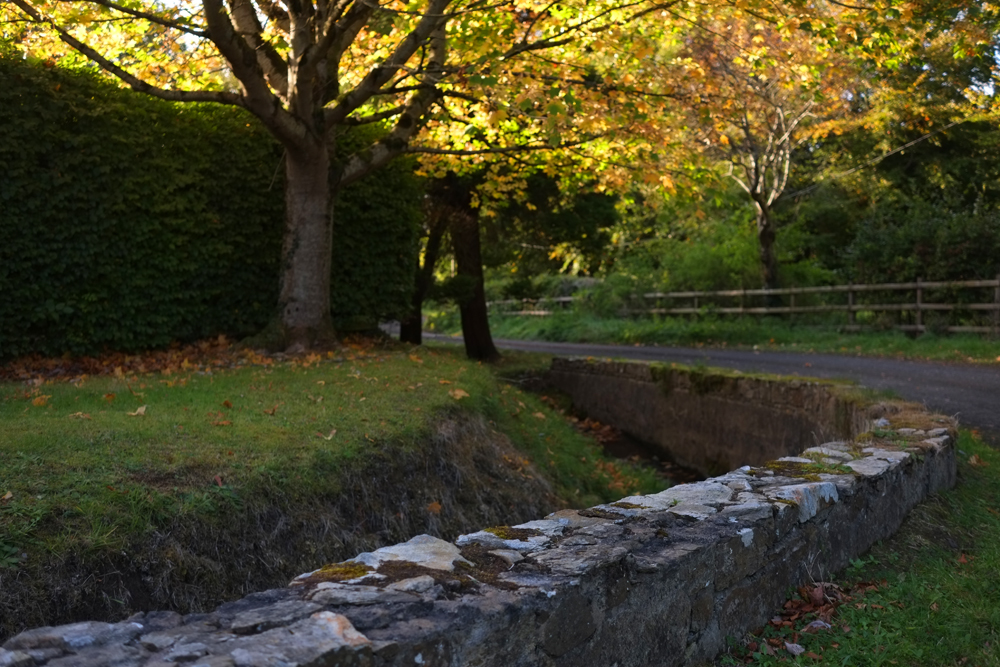
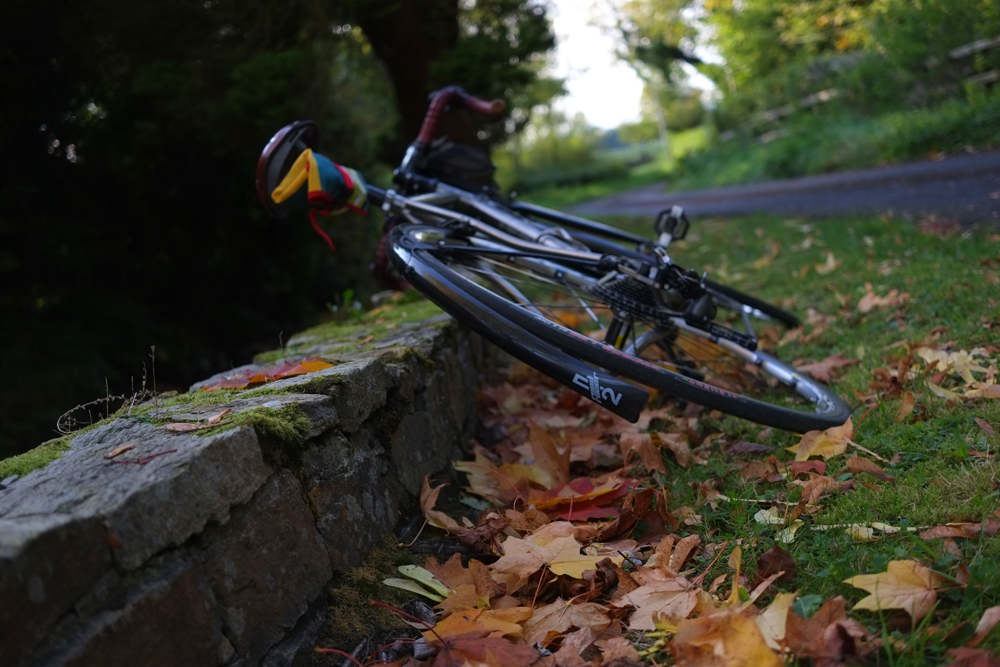
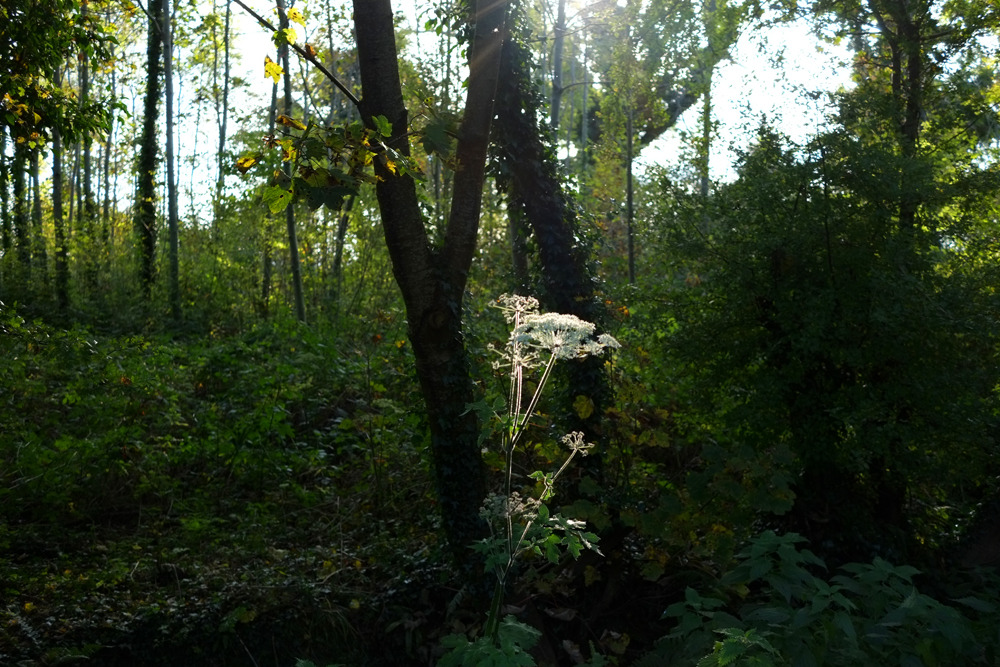


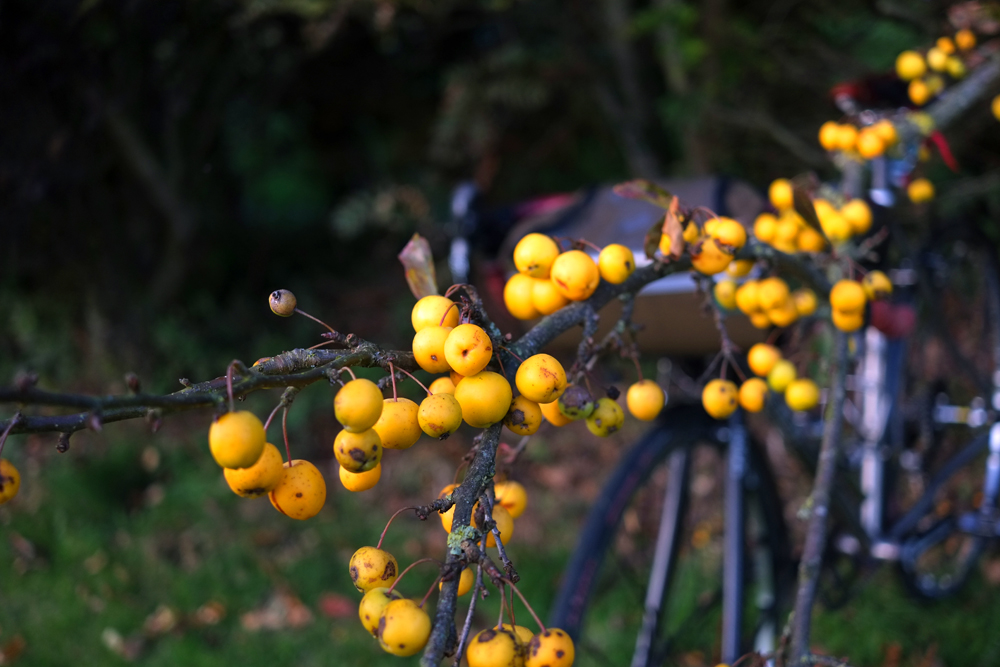


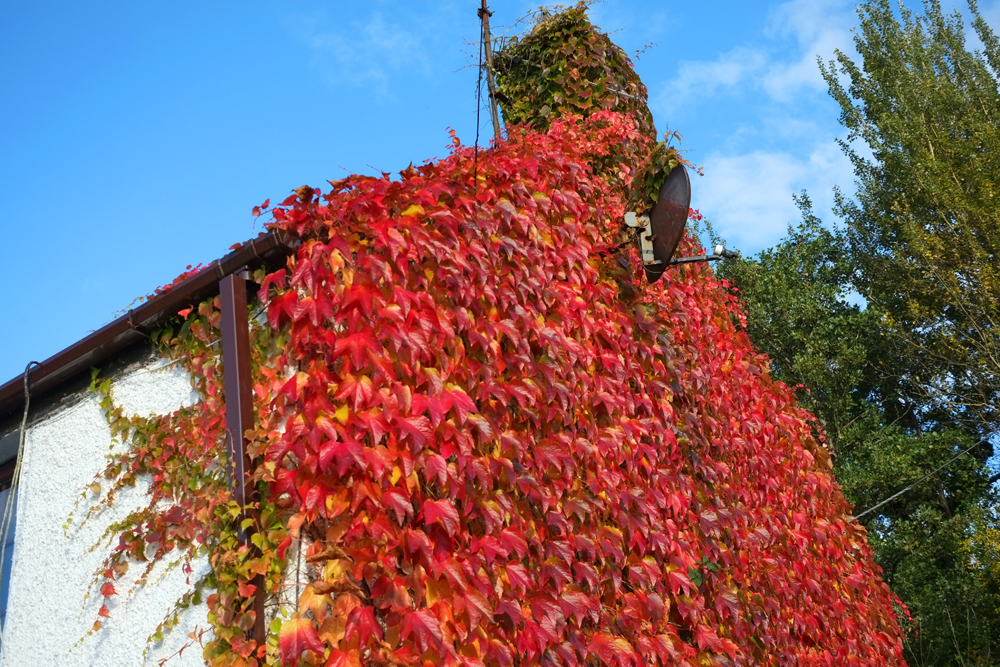
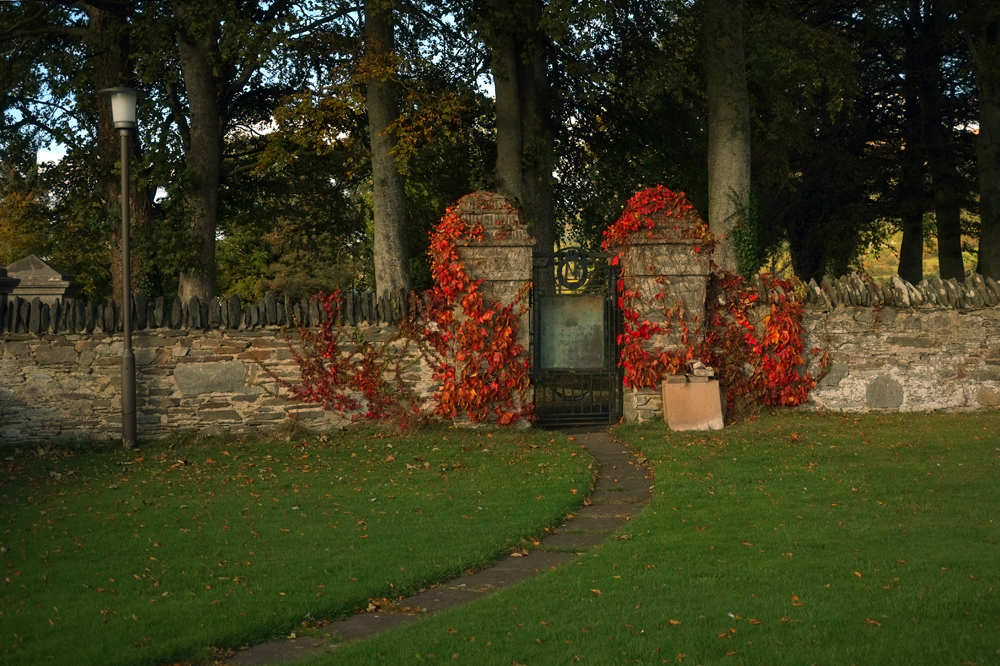
Regarding blackberries, the tradition in England is that they should not be picked after Michaelmas Day (29th September). St. Michael hurled Lucifer from Heaven, and, in revenge, the Devil spat (the polite version) upon the brambles; and thus they did shrivel.
ReplyDeleteIn some years, blackberries are edible after that date, but this year, where I live in Suffolk, they seemed to shrivel almost on Michaelmas Day.
4 years living in East Anglia and I did not know that!
Deletesimply beautiful!
ReplyDeleteA different time a different place a different person…This smacks of melodrama which diminishes it's potential. I'm enjoying the 'sad yellow browns' and way's in which nature constantly surprises even in my dark neck of the woods. Bicycling simply allows me to experience nature differently and I'm grateful. Things I thought to be boring are now alive. It's biology and beautiful and available. If you had a camera as a student in those dreary days would you have thought differently?
ReplyDeleteThe landscape itself is melodramatic here, coming across at times like an exaggerated illustration of itself. I'll be cycling past a peat bog covered with improbably-vibrant patches of heather when I'll notice a double rainbow ached perfectly over an emerald-hued mountain and it's like "Oh come on, you've got to be kidding me." England, in comparison, I remember as being more subdued, subtler. I lived in a picturesque area, walking through the Grantchester meadows daily. It was not at all dreary. But there were softer colours, gentler outlines, less dramatic fluctuations in light. Autumn was less colourful than what I'm used to in Northeast USA and continental Europe. On the other hand, I remember Spring as being more intricate and drawn out than anywhere else I've seen, including here in NI.
DeleteIn my 20s I used a Nikon F2, shooting mostly black and white, and an early CoolPix for digital. Lots of photos from that period, though there are more portraits than landscapes.
Beautiful photos - what a charming landscape to cycle through.
ReplyDeleteTraditionally they aren't harvested until after the first frost but what is the sloe (blackthorn) crop like this year?
ReplyDeleteThe best thing for sloe of course is a sloe gin and if there is an early frost, it should be ready for drinking at Christmas.
I do not see a lot of it where I live, but will keep a sharper eye out.
Deletethe only thing that changes color around here are the vineyards, and the hills will turn a lush and vibrant green as we go into the rainy season, although we're in one of the worst droughts in a long time.
ReplyDeleteI wonder about those "apples" and are they edible!
ReplyDeleteI don't think they're either edible or actual apples, but I'd love to know what they are if anyone knows.
DeleteBeautiful words and photos. I love ivy. The romantic notion of a house has ivy growing up the outside walls, but people always tell you, “Oh no, ivy causes dampness!” – honestly, some people have no soul. A wall without ivy is like a head without a hat. Or even a face without a beard (that’s if you’re a man, of course).
ReplyDeleteI was told the opposite here: that ivy reduces dampness and provides added insulation. It could depend on the variety of ivy and on the material the walls are made of.
Deletestone vs wood; it is very difficult to grow ivy without damaging the wooden shingles so popular in the US
DeleteI've been looking into this and reading about the different varieties, as I'd like to try growing some along the front wall of the (stone) house I live in here. My understanding is that it's not so much about wood vs stone siding, as it is about the wall being smooth with no lifted edges or cracks that the plant can creep under/into and tear apart. In and around Boston there are lots of wooden houses covered in ivy, though they probably do require greater maintenance.
DeleteWow, that looks far more colorful than the autumn I spent near Cork 2 years ago! Could it be a North-South difference I wonder?
ReplyDeleteI am sure that plays into it, as well as the relative dryness/dampness of the season any given year. I know last year the foliage in New England was not as nice as usual due to an overly rainy late summer. Could be the opposite in NI this year, with an unusually dry late summer causing the picture-perfect Autumn.
DeleteI like these pleasant photos, there is something of perfect work. As usual you are skillful to balance color and value.
ReplyDeleteIn that case, if I were to be yourself I would try and take a little risk with square picture frame which is more difficult (supposedly) than 4:3 one.
Best.
L.
Ivy is evergreen, that plant is Virginia creeper, but yes it is beautiful!
ReplyDeleteIs Virginia Creeper not a variety of ivy?
DeleteLook closely it is not Virginia creeper. Its Japanese Ivy, sometimes called Boston Ivy. Check out Parthenocissus tricuspidata in Wikipedia.
DeleteNice post, nice photos!
There are two separate ivy-covered walls shown here. Could one be Virginia and the other Boston? Still trying to understand which variety will be easiest to grow on my own wall!
DeleteBoth are easy to grow in temperate climates. Thats you! Both have pretty red fall color. Boston Ivy climbs masonry and wood walls with ease. Virginia creeper succeed better climbing up your trees. Hey that rhymes. On a wall you may need to help Virginia creeper out with a trellis or something to get it going. Boston Ivy may achieve full coverage of a wall faster and on its own is my guess. Bottom line is I think Virginia creeper is a little prettier, but on a wall Boston Ivy may achieve full blown success and visiual effect sooner and more assuredly. Disclaimer: I am not an expert, just an observant experimenter.
DeleteGood luck!
Just read an article on web that says Virginia creeper can also climb walls well. So there you go.
DeleteI was thinking about this post a bit while out on an all-night ride Sat. It's so beautiful here in VA this time of year but I sometimes forget to pay attention till I go out in the woods during Deer Season.
ReplyDeleteThere were patches of brilliant color that stood out across mile wide valleys or glowed from the dark bottoms of hollows deep as they are wide. Only a sliver of moon but enough to see by if one remembered to try. Thanks for the reminder.
Spindizzy